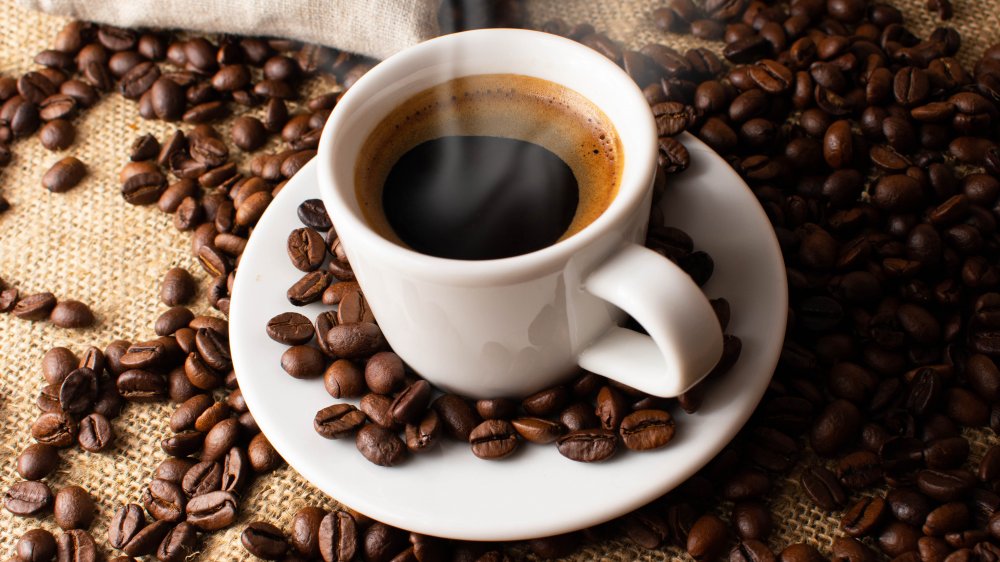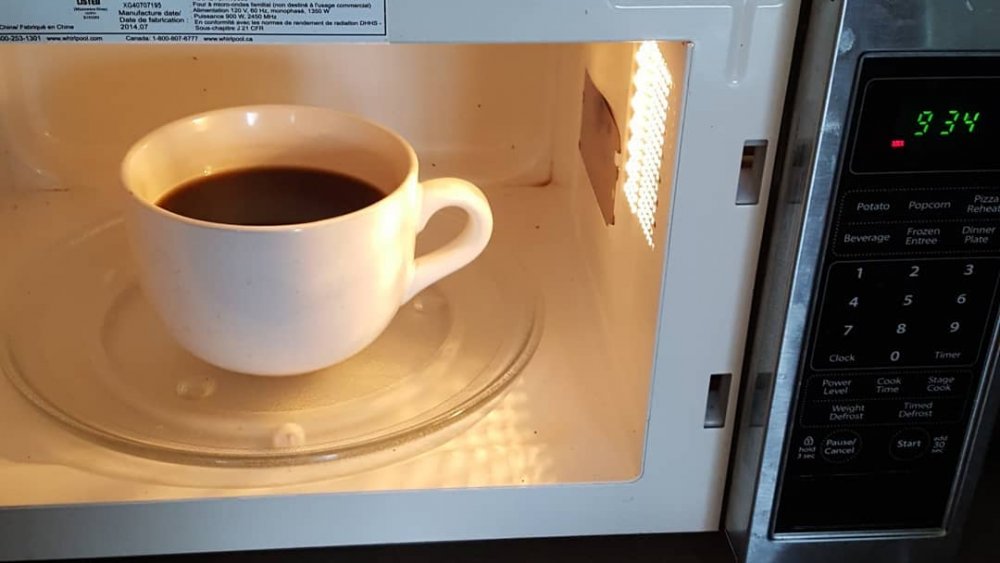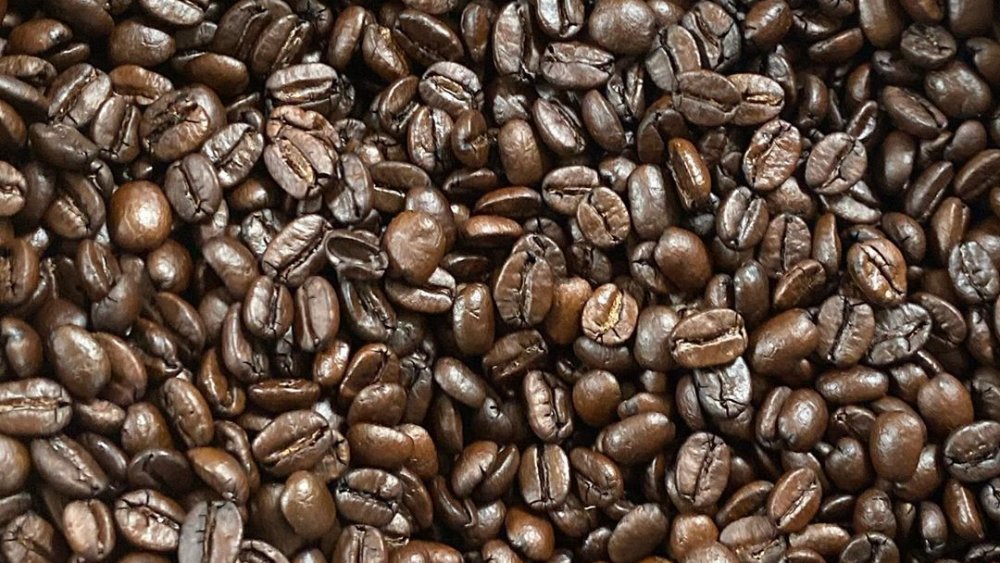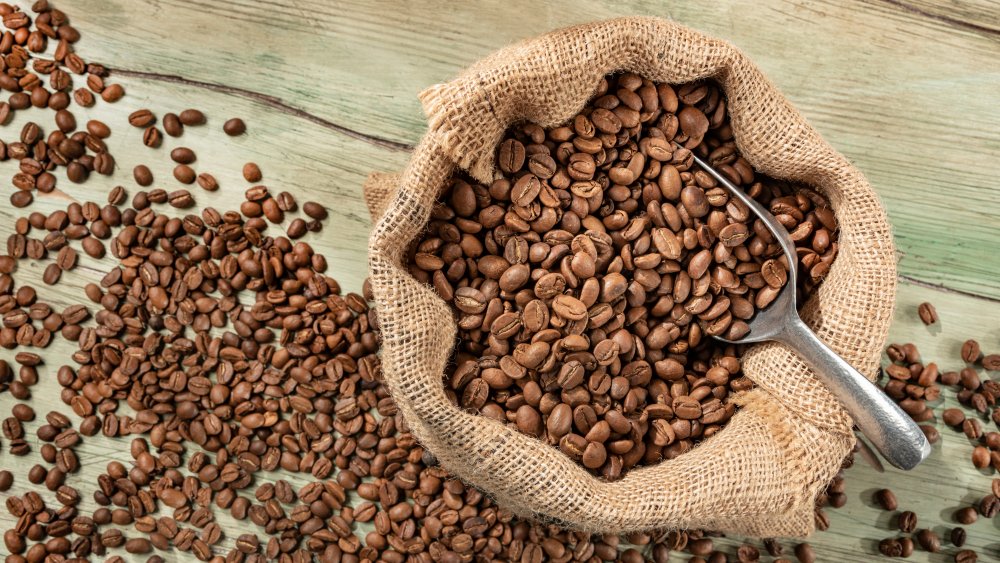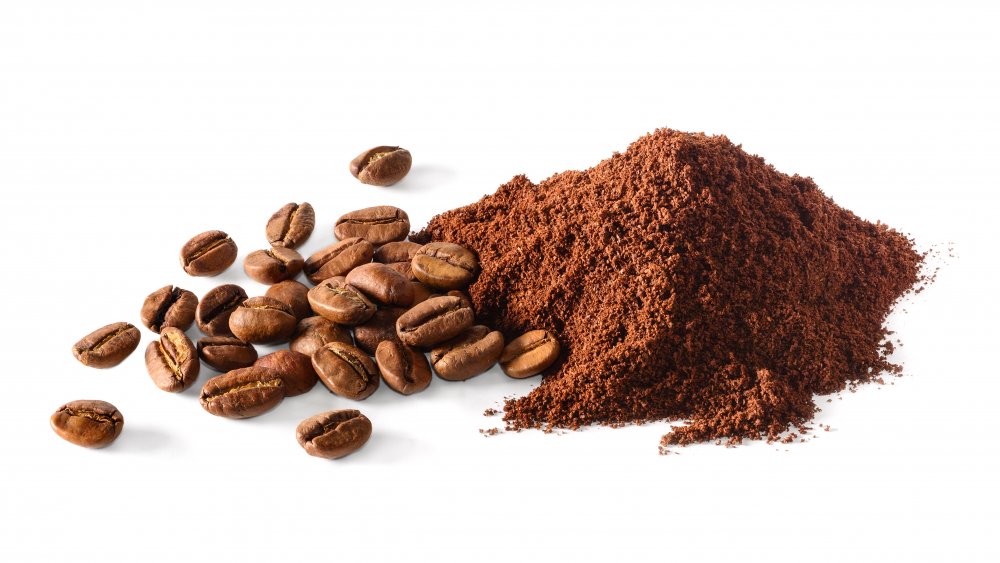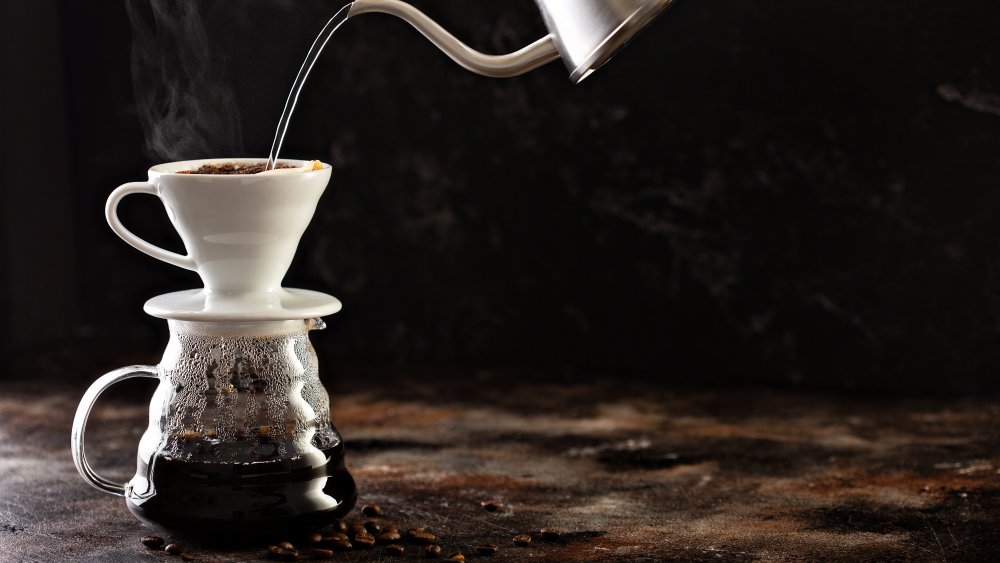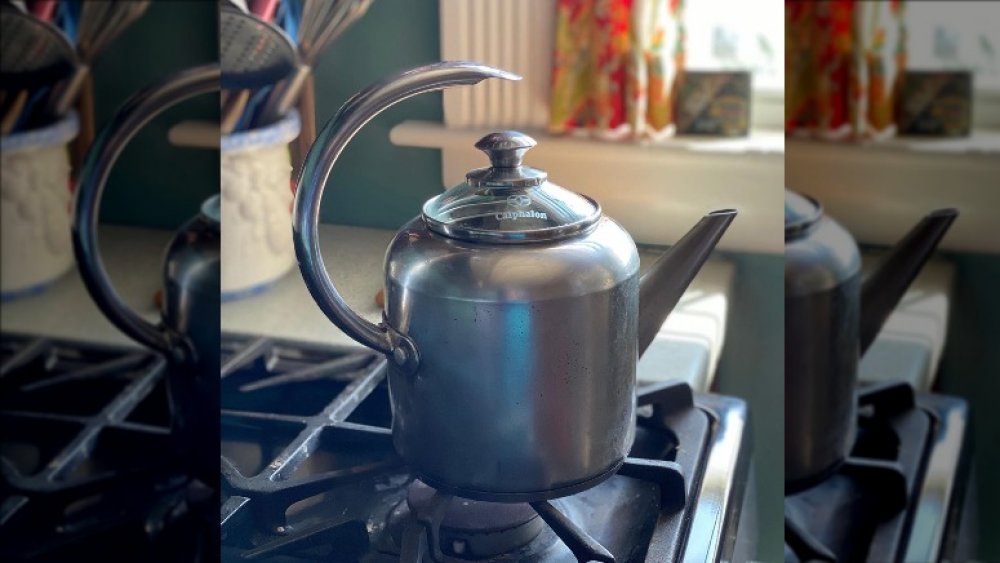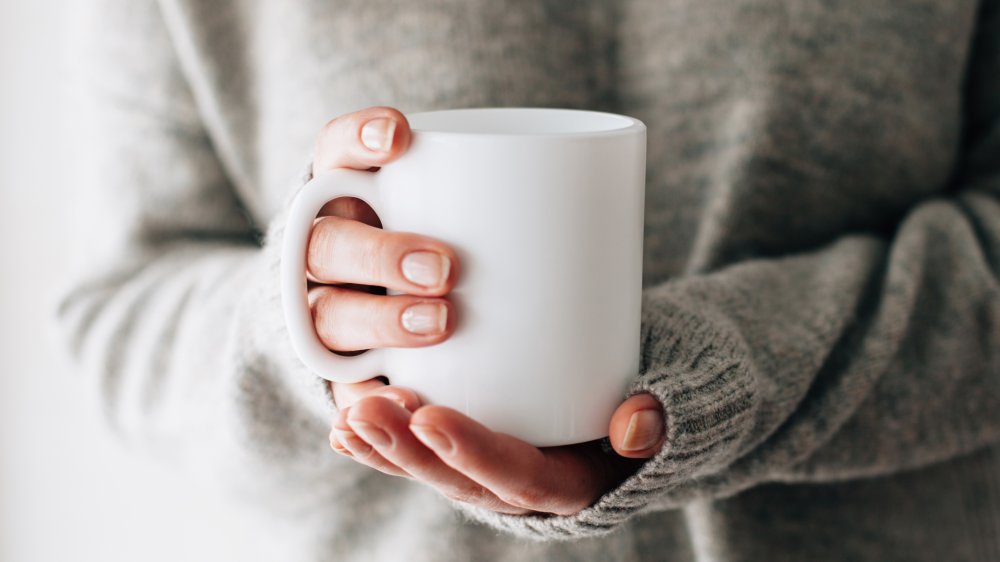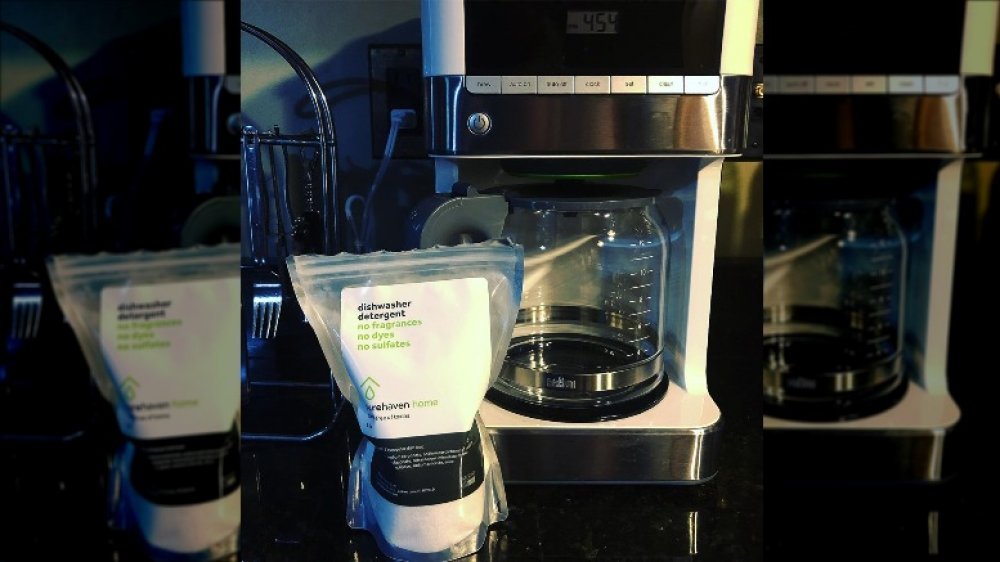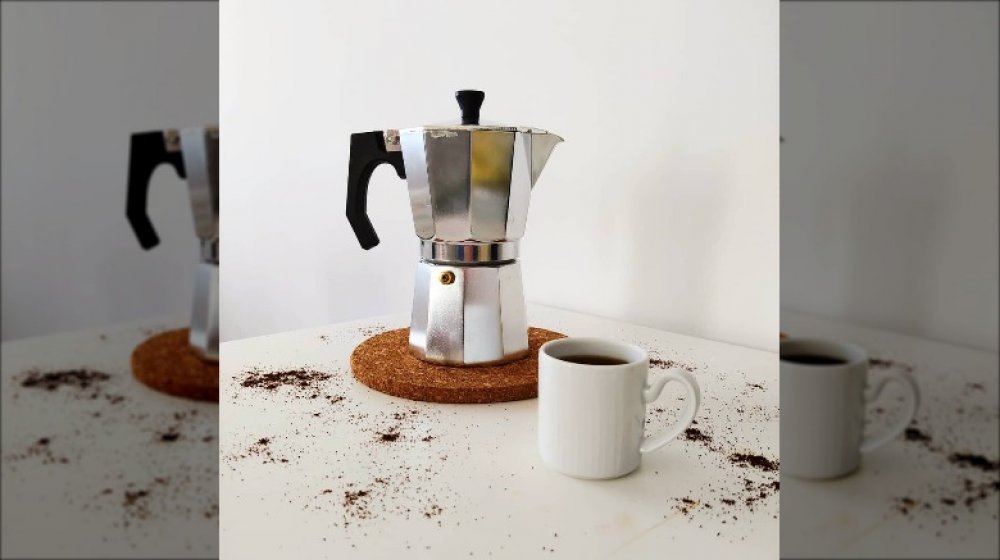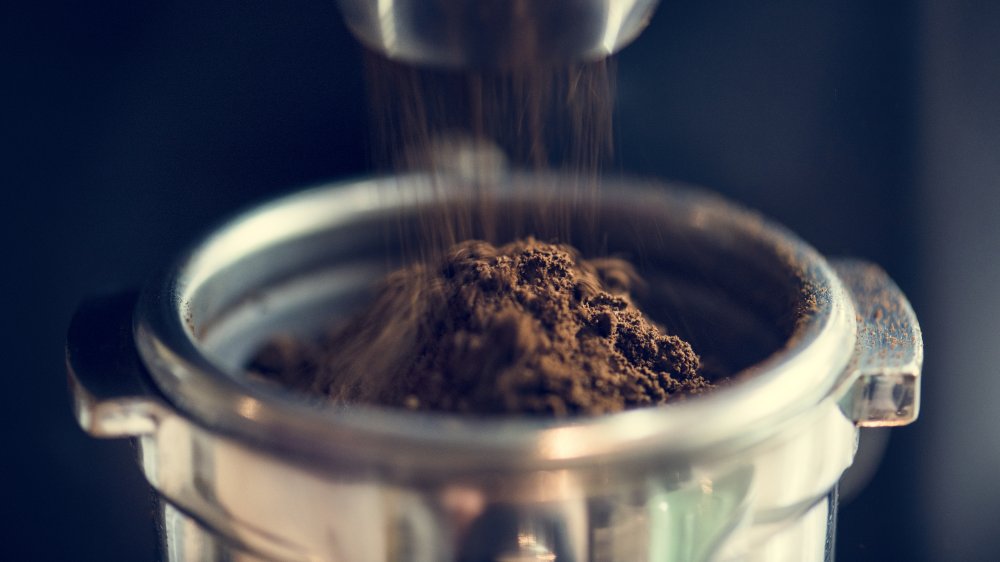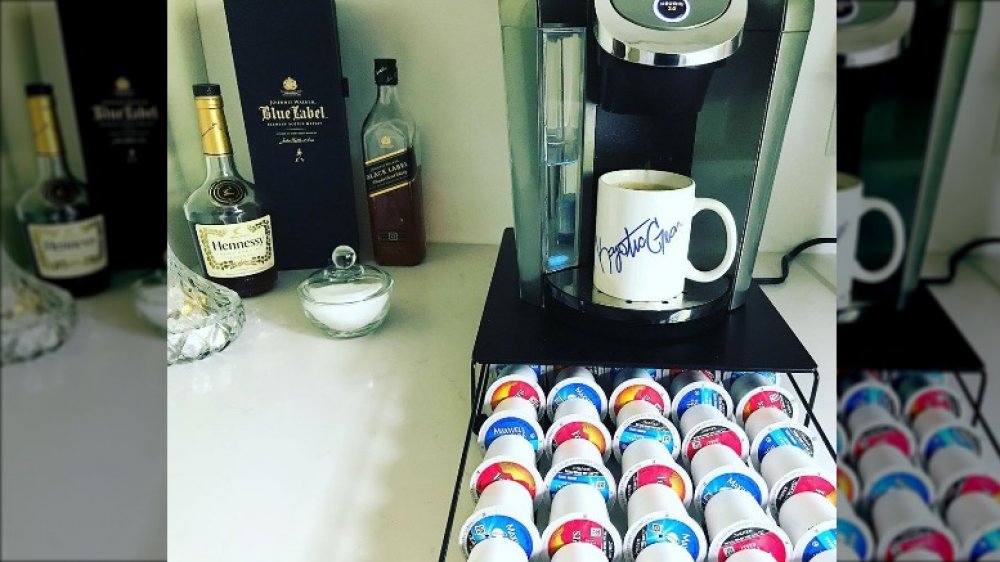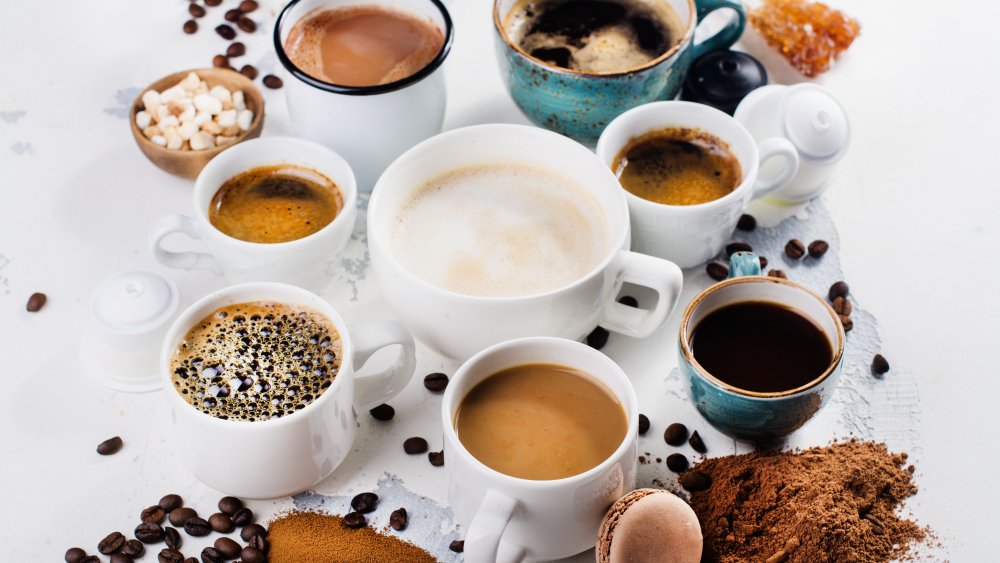Coffee Mistakes You're Probably Making At Home
Making your own coffee at home sounds so good on paper. You get to save money, use your fancy reusable travel mug, and skip the Starbucks drive-thru line in the morning when you're in a rush to get to work. But for many people, the coffee coming out of their coffee pots in the morning just can't compare to what they'd get from their favorite local coffee shop down the street. It may seem like coffee is the easiest thing to make in the world given its ubiquity in our everyday lives, but in reality, countless people are choking down bitter, oily coffee every morning, forgoing the pleasures of a well-brewed cup of Joe in favor of a purely utilitarian, joyless jolt of caffeine. We deserve better.
There's no need to feel shame the next time you have to discreetly pick a coffee ground from your teeth — making a good cup of coffee is an art. There's a reason you're willing to pay $6 for a coffee from your favorite cafe when you're fed up with your own brew. But if you're interested in expanding your culinary skills into the wild world of coffee making, you first need to recognize some of the most common coffee mistakes you're probably making at home.
Reheating your coffee in the microwave
Here's a situation that far too many busy people are familiar with. You're at home or at the office, and you brew a cup of coffee, fully expecting to get to it as soon as it's ready. But in the time between when the coffee starts brewing and it's ready to drink, it seems like a thousand urgent tasks come up. Your coffee then sits, abandoned, getting colder and less appetizing by the minute. If you're like any reasonable person out there, you might just put it in the microwave to get it to that perfect, piping-hot temp.
This is just a disaster waiting to happen if you actually want your coffee to taste good, though. Ideally, you'd drink your coffee as soon as it's ready. The longer you let coffee sit out, the more bitter it becomes. Add to that the fact that reheating coffee also makes your cup of Joe even more bitter, and it's clear to see why you should try to drink your coffee as fresh as possible. If you find your coffee going cold often, you may want to invest in a nice thermal mug instead of popping it in the microwave.
Buying low-quality coffee
Wine experts have been around forever, and craft beer enthusiasts have taken over just about every urban and suburban bar in the country. But a true coffee connoisseur is still a relatively rare breed. Most of us aren't really aware of what sets an amazing cup of coffee apart from a good one or even a mediocre one. If you're not enjoying the taste of your coffee, though, it may be because you're buying low-quality coffee beans.
When it comes to taste, you're looking for the perfect blend of acidity, bitterness, and sweetness in every sip. However, if you're brand-new to the world of good coffee, your taste buds might not yet have that instinct. Don't worry, it'll come. An easier way to tell if you've got a quality bean or not in the meantime? Grind some of the beans up and spoon them on top of a glass of ice water. If you're dealing with a high-quality brew, the color shouldn't leach into the water after a few minutes, while a lower-quality coffee ground will.
Using old or stale coffee beans
Even if you do know what you're looking for in a high-quality bean and roast and you make that investment, you could still be going wrong in the bean department. A big part of the taste of a good cup of coffee comes from the freshness of the beans. Without a fresh bean, you're not going to get the best possible flavor. You may think that you can leave coffee beans in your cabinet for months on end without losing any of that flavor you love, but that's just not true.
In fact, if you don't take steps to preserve your freshly roasted beans, they may only last for about a week to a month before they start to go off and lose their taste. If you have bought higher-quality beans, this is a total waste of money. The most important thing to remember when storing your coffee beans is that you want to prevent oxidation, meaning you want to keep them in air-tight containers. If you're lucky, your coffee will already come in a valved pack — that way, all you have to do is make sure you seal it properly. If not, you can always pick up an inexpensive airtight container in which to store your beans.
Opting for coffee grounds instead of whole beans
When you're at the grocery store or market picking up your next bag of coffee, you have a very important choice to make: Do you buy the beans or the grounds? Listen, we understand the appeal of buying grounds. You don't have to invest in a noisy coffee grinder, and it means one less step between you and your coffee when you're bleary-eyed from sleep and making your first cup of the day. But hear us out: Whole beans are far, far superior to grounds.
Not only will whole beans stay fresh for longer, reducing the likelihood that you'll find yourself with a full bag of stale coffee, but whole beans also just taste (and smell) better. Yes, it takes a bit longer to make, but you can just look at that extra 30 seconds of grinding as self-care time you fully deserve. If you don't have a coffee grinder, now may be a good time to upgrade your coffee game.
Using low-quality water for your coffee
Water isn't probably the first ingredient you think about when you set out to make a good cup of coffee. If you're like most people, it's all about the bean. But since an average cup of coffee is 98.75 percent water, it makes sense that you'd want to think about the quality of water you use as well. Tap water seems like an obvious choice, but since the quality of tap water varies significantly depending on what region you live in, you may not be getting the best cup of coffee possible if you use H2O straight from the tap.
Filtered water is a better option if you have access to it. You can get this from a refrigerator filter or a sink filter if you have one. If you don't, though, you can always use a pitcher filter. Just remember to fill it up the night before, and you'll have better-tasting water to start your coffee with. And if you don't mind the extra waste, you can always use bottled water, though it's not the most environmentally friendly option.
Using water that's the wrong temperature when making coffee
When it comes to making the perfect cup of coffee, you not only have to think about the quality of the water you're using but also the temperature of that water. The temperature you use will depend on what method you employ to make your coffee. Using a traditional drip coffee maker? In that case, you should add cold water. The majority of coffee makers out there assume you are starting with cold water and apply heat accordingly.
On the other hand, if you're using a French press, you'll need to be a bit more careful with your water temp. You need to heat your water, of course, but too many people think they have to boil their water before they pour it over the coffee grounds. That's a big no-no, though. The ideal water temperature for your French press is 195 degrees Fahrenheit, which is actually below boiling. Any hotter and you could scorch the coffee. If you want to get really exact with your water temperature, invest in a thermometer for your kitchen.
Using the wrong kind of coffee mug
Questioning the quality of your beans or coffee maker sounds reasonable when you're trying to make a better cup of coffee. But has it ever occurred to you that the cup you drink out of could be making a big difference? If you're enjoying a nice iced coffee, this may not be a problem for you. But if you enjoy your coffee as hot as can be, you'll want to avoid thin-walled and generally flimsy mugs and cups for your coffee. These types of vessels allow the heat to escape quickly. So, you could go from having a piping-hot cup of Joe to something less appetizing and more room temperature in minutes.
The solution? Use a thick-walled coffee mug, like the type you'd find in old-fashioned diners. A handcrafted ceramic mug (also with thick walls) would work well too. And if you're the type who's always on the go, it can be smart to purchase a high-quality travel mug so you can always take your hot coffee to the office or wherever else you're headed for the day.
Not cleaning your coffee maker often enough
Your coffee maker does so much for you every day: Would you even get out the door without it? And still, if you're like most people, your poor coffee maker sits at home every day, neglected, begging to be cleaned. Contrary to what seems to be popular belief, you do need to clean your coffee maker on the regular. On average, coffee makers are the fifth germiest item in your kitchen and bathroom: even germier than your bathroom faucet handle.
Therefore, it's important to clean your equipment frequently. Just how often that is will depend on what kind of coffee maker you're using. With a French press, you'll have to clean it after every single use. When it comes to a drip coffee maker, though, you should clean it at least once a month. Cleaning a little more often than necessary won't hurt you, though, and it will ensure that your coffee tastes as good as it possibly can.
Only using one coffee brewing method
Many of us have only made coffee one way in our entire lives. Perhaps you've only ever tried a drip coffee maker, or maybe you've been addicted to your Keurig for as long as you've been drinking coffee (or as long as they've existed). Here's the thing, though: You don't know if you're missing out on a better method before you try the others out for yourself.
You're probably most familiar with a drip coffee maker, which is what most people have in their homes. They're simple and easy to use, and they can brew big batches of coffee at once. You may not get the best taste from this method, though. If you're looking to branch out, you can look into options like pour over coffee, a moka pot, or an Aeropress. All of these coffee-making methods offer a slightly different taste. Everyone likes their coffee prepared differently, so don't be afraid to experiment with other brewing methods if you're on the hunt for the perfectly home-brewed cup of coffee.
Grinding your coffee beans ahead of time
Die-hard coffee fanatics usually opt for beans instead of ground coffee, since they just taste better. But at the same time, you might enjoy the convenience of pre-ground coffee. It's just one less step that you have to deal with in the morning while you're brewing your first pot. Therefore, it might seem like it would make sense to pre-grind your coffee beans ahead of time so you can get a jump-start on your day.
If you really want that fresh taste, though, this isn't the way to go. Instead, it's a better idea to grind your beans right before you brew them. The longer the coffee grounds are exposed to the open air, the more they go through a process called oxidation. This allows some of those delicious aromas to escape your coffee, leaving you with a tasteless or even stale cup of Joe. Sometimes, time takes precedence, and you'll have to pre-grind. But if you really want to enjoy a cup of coffee on a slow morning, take your time to grind right before you turn your coffee maker on.
Using a single-cup coffee maker
Those who aren't already skilled in the art of making coffee and have come away from their morning mug with a grimace more than a few times may venture into the expensive albeit luxe world of single-cup coffee maker. Think Keurig or any of its knockoff cousins. Their appeal is real: No measuring, no grinding beans, no waiting. Just a single cup of coffee ready for you whenever you want it. In theory, it's a great idea. But in practice? Not so much.
Of course, you probably already know that K-Cups and other single-use coffee pods are terrible for the environment. It's no secret that throwing away that much plastic on the daily is going to have a negative impact on the health of the earth. Also, these types of coffee makers can often be expensive, as are the pods necessary to fill them. These downsides may be worth it, though, if the coffee were the best you've ever tasted. Spoiler alert: It's not. Pod coffee is actually pretty bad, largely because the pre-ground coffee is likely already stale by the time it gets to you. There are a host of many other factors that lend themselves to subpar coffee in a single-cup coffee maker, so this is one trend you may want to forgo on your quest for the perfect cup.
Using the wrong grind for your coffee-making method
If you are branching out and trying new brewing methods, you're already on your way to making better coffee at home. But if you're new to top-notch home brews, it's important to keep in mind that you'll need a different grind for whatever coffee-making method you're using. For example, for some methods, you'll need a super-fine grind: Turkish coffee is made with a special coffee grinder that can sometimes be difficult to find. On the other hand, making coffee in a French press requires the opposite — a coarse grind is the name of the game.
Those who are serious about taking their coffee game to the next level can consider several different grinders for their different coffee purposes. But for most of us, choosing one grinder that complements the brewing method we generally use is good enough. Doing just a little research to determine the best grind for your coffee maker is one of the most important steps to achieving the ideal cup of coffee.
Drinking your coffee when it doesn't taste good
Too many people don't truly enjoy the coffee they're making every morning, but since it's all they know, they get up and follow the same steps over and over again. Maybe they don't bother with measuring how much coffee they're using, or maybe the water they use is too hot. Whatever the issue is, they don't recognize it. But more importantly than that is the fact that they don't realize they can change and learn how to make a truly delicious pot of coffee.
If you force yourself to choke down coffee you don't enjoy every morning with the belief that that's the best you can do, you're selling yourself short. The solution isn't another Starbucks run. Instead, challenge yourself to try something new. Always use an Aeropress? Try a drip coffee maker instead. Always buying the same, cheap bag of coffee? Splurge and opt for something new and more flavorful. There's no need to keep following the same formula if it's not giving you the results you want.
